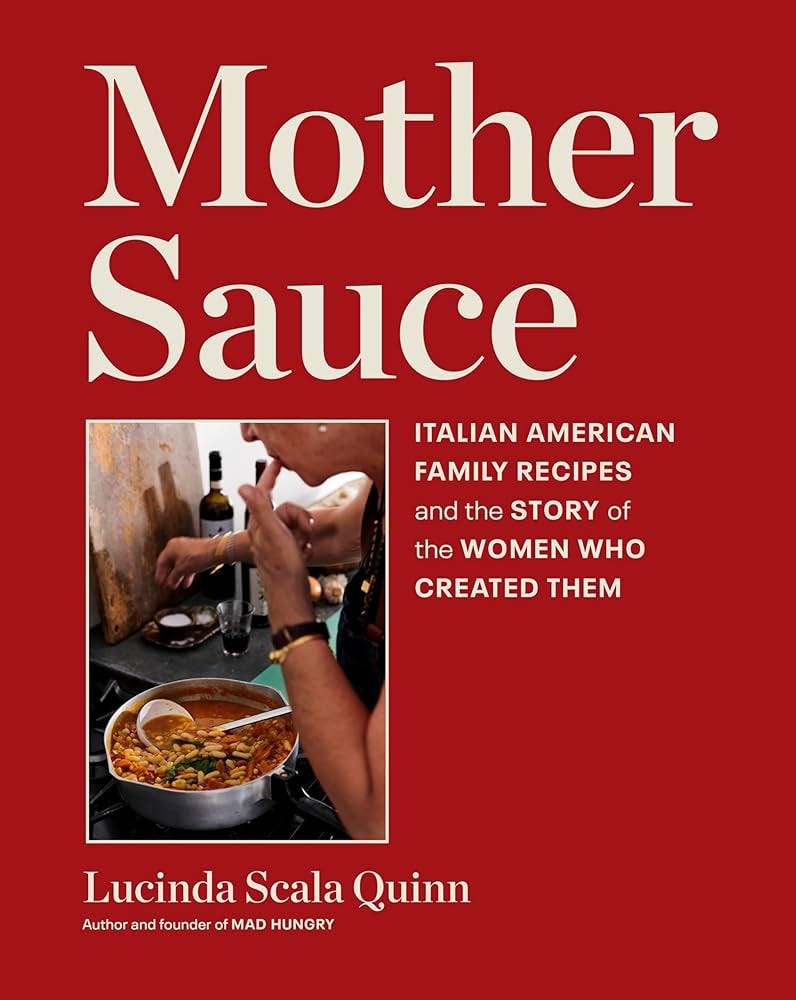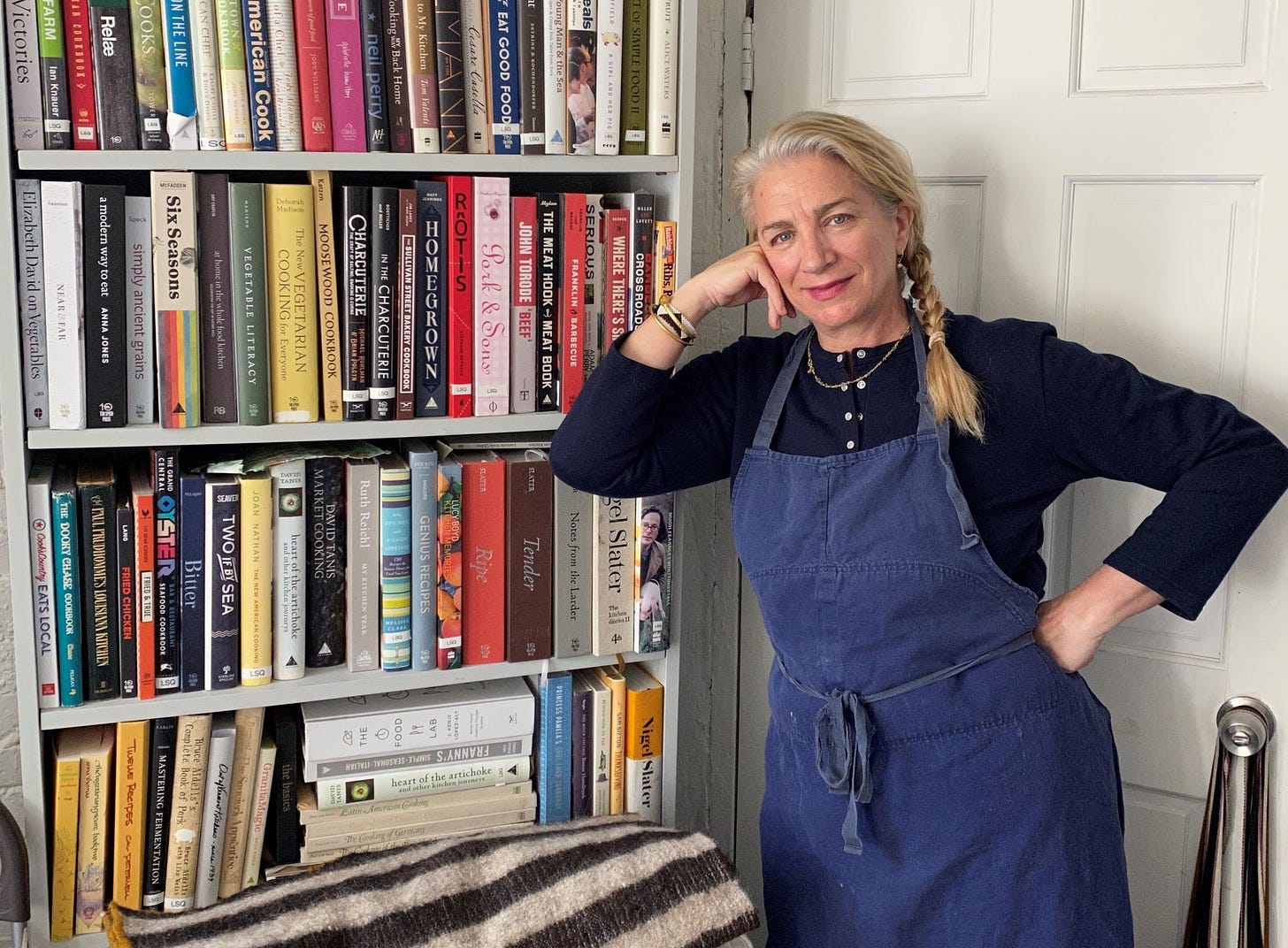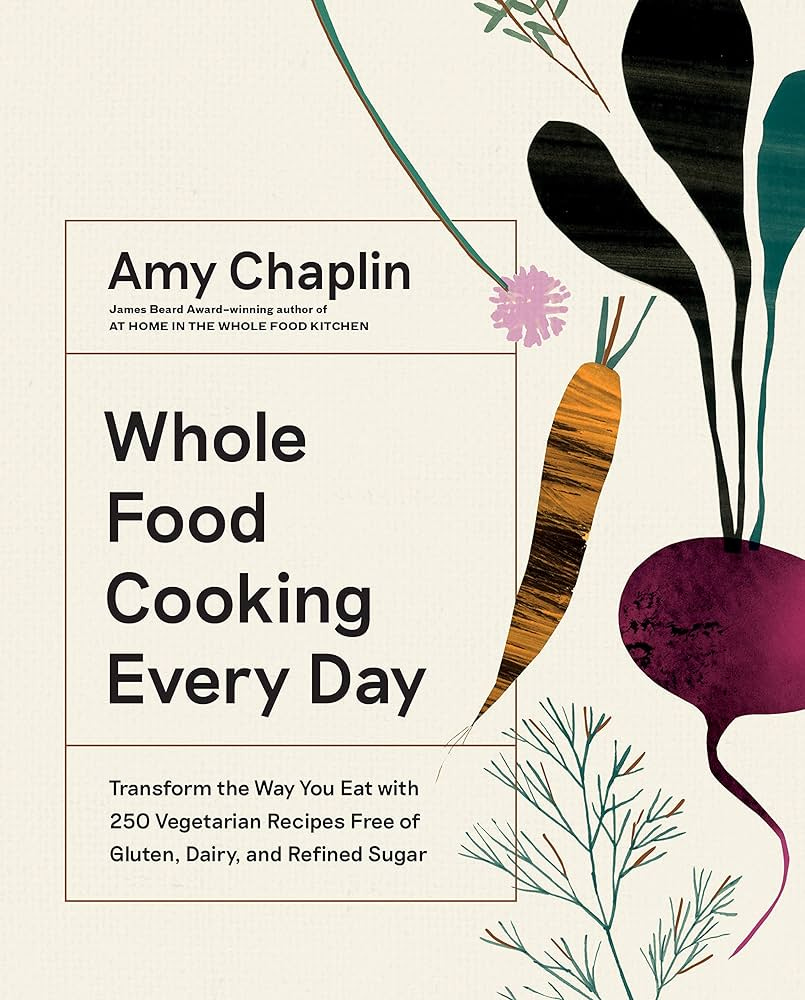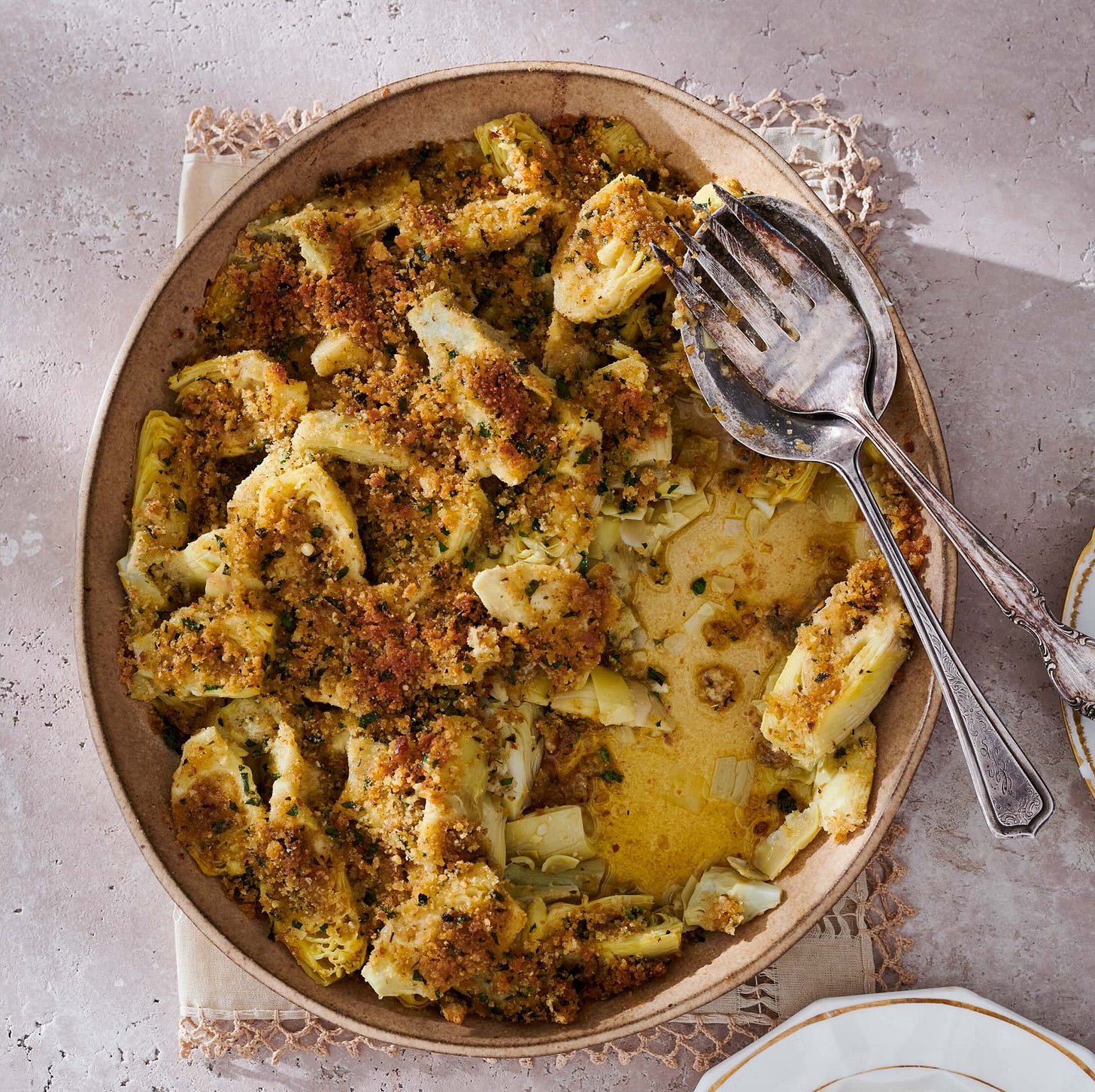In Mother Sauce, Giving Credit Where It's Due
Lucinda Scala Quinn wants cookbooks to be an immersive experience.
There’s a passage in the introduction to Lucinda Scala Quinn’s new book Mother Sauce (Bookshop/Amazon) that hit close to home for me:
“At the turn of the twentieth century, the kitchen and the dining table were the only creative power centers for immigrant Italian women. The stove was their canvas, the kitchen their studio, and the family seated around the dining table their audience. This was both a gift and a never-ending burden.”
In the 1960s, my mother-in-law Iolanda immigrated to Montreal from southern Italy as, essentially, a child bride. She was 16 and married my father-in-law, who was from the same village and 10 years her senior, in an arranged marriage. She did not want to wed or leave all of her family and friends to move to a cold country where she didn’t speak the language. She had three sons in quick succession and never held a paying job.
There is a lot more to her story, but what’s important here is that the kitchen became, and still is, her domain. Yes, it was a lot of work (which she sometimes resented; who wouldn’t?), but she also developed skills that were prized and complimented. She earned praise and status in her family and wider social circle. Her pizza and meatballs and lasagna are famous; everyone is eager to sit around her table. Mother Sauce put that experience, that power structure, into words in a way I never thought to articulate.
I so admire this book. It tells the largely untold story of the women who created our country’s most beloved cuisine. It’s both personal and universal, and I want to prepare every recipe. So far, I’ve made the Sausage Ragù, Savory Easter Pie, and Baked Artichoke Casserole (recipe below!). All would have made my mother-in-law proud had she been in NYC to enjoy them with us.
I also love how thoughtfully the book is put together. I mentioned in an earlier newsletter that at her book launch party Lucinda said that “cookbooks should be an experience.” That phrase struck me instantly because I agree so intensely. This book is a world until itself, from the images of Lucinda’s Italian-American family, to location photos at markets, essays on staples like eggplant, a section on cooking frugally, and even an evocative Mario Puzo quote for heaven’s sake.
Previously, Lucinda oversaw all food content at Martha Stewart Living Omnimedia. She’s the author of several cookbooks and the founder of the Mad Hungry kitchenware brand. Thank you, Lucinda, for Mother Sauce and for chatting cookbooks!
The Cookbookery Q&A with Lucinda Scala Quinn
About how many cookbooks do you own?
LSQ: Somewhere around 700
How do you organize them?
LSQ: By country, region, professional restaurant, savory, baking, literature
What would you say to someone who questions why cookbooks still matter in our "digital age”?
LSQ: The best cookbooks are an immersive experience with context, teaching, sometimes history. Plus it feels more natural to use your butter-splattered fingers to flip through and open pages, made from paper made from trees, than to be swiping the glass on my phone or tablet, which I’d rather use to take photographs of the food.
Tell me how Mother Sauce came to be.
LSQ: The experience in my family with Italian American food came 100% from the women; grandmother, great aunts, mother, and aunts. The women cooked, shopped, cleaned, made do with little by employing techniques from the cucina povera in their home country. Once in America with an abundance of products, they built a new foodway out of necessity. I never felt they received the credit they deserved for building a whole subset of American cuisine which today, 100 years hence, is possibly the most popular foodway in America. Every child has some form of pasta or pizza as their earliest meals.
What are you most proud of when it comes to Mother Sauce?
LSQ: That I took the time to deeply research the Italian American immigrant experience of the women which is so little written about to date; visiting Ellis Island, reading history books, investigating the largest Italian-American communities in America first-hand, reading histories, experimenting with iconic recipes from my family and others. Beyond my own experiences growing up, I learned that the contribution of the women everywhere was the same. Italian-American food that we know and love was built on their backs. Since they had little opportunity outside the home, their husbands, fathers and sons monetized their food. I’m proud their story is now told.
What is the first cookbook you remember cooking out of?
LSQ: My grandmother’s recipe box, then as a teenager, Mastering the Art of French Cooking (Bookshop/Amazon) by Julia Child
What kind of cookbook reader/user are you?
LSQ: Omnivorous. I read the best books cover to cover. I give every cookbook that crosses my path a chance by reading the introduction (the heart of the book), and cooking a few recipes. I’ve been a James Beard cookbook judge and a food editor for many years. For a new book to come into my library, it has to earn its spot.
What is one cookbook you read, but don’t cook from?
LSQ: Smorgasbord & Scandinavian Cookery by Florence Brobeck & Monika Kjellberg
What’s a cookbook that changed the way you cook?
LSQ: Recently, Whole Food Cooking Every Day (Bookshop/Amazon) by Amy Chaplin. I began making my own healthy basic ingredients rather than buying them like nut butters, milks, crackers.
What’s a cookbook that totally transports you?
LSQ: Edna Lewis’s The Taste of Country Cooking (Bookshop/Amazon) puts me right in her shoes at that important time in history, where true joy and bounty is found in the seasons and what grows and is made in Freeport, Virginia. Money couldn’t buy that experience. Every page is a joy to read, and the recipes still hold up.
What's a cookbook cover you're obsessed with?
LSQ: Rintaro (Bookshop/Amazon) by Sylvan Mishima Brackett
What's a cookbook that you think didn't get enough attention?
LSQ: Hsiao Ching Chou’s Chinese Soul Food (Bookshop/Amazon). These are simple, doable, essential recipes that will replace inferior Chinese take-out, but satisfy the craving. Every single recipe works perfectly.
What’s one book you’re sheepish to admit you’ve never cooked out of?
LSQ: Marcella Hazan’s Essentials of Classic Italian Cooking (Bookshop/Amazon)
You’re only allowed to cook from three books (aside from your own) for the rest of your life. What are they?
LSQ: Madhur Jaffrey’s An Invitation to Indian Cooking (Bookshop/Amazon), Diana Kennedy’s The Essential Cuisines of Mexico (Bookshop/Amazon), Claudia Roden’s The Book of Middle Eastern Food
Interview has been lightly edited. If you purchase a book through one of these links, I may receive a small commission.
More to Nibble On
I got a few hot takes on salted butter in baking from cookbook authors
and Samantha Seneviratne. Readers, feel free to disagree in the comments below!This week’s NYT Bestsellers: No cookbooks, but José Andrés’s book Change the Recipe comes in at #9.
Recipes I made this week: The garlic aioli from Salt, Fat, Acid, Heat to slather on the first local asparagus of the season, the Malai Chicken with Stuffed Dates (again) from Hot Date!
Thanks for reading, and enjoy this recipe! When I made it I couldn’t find frozen artichokes, but swapped in drained and dried canned ones with great success.
Recipe from Mother Sauce: Baked Artichoke Casserole
My mom adapted this from her Italian mother-in-law’s whole steamed artichoke recipe to make a dish that easily feeds a crowd. It uses the same flavors but eliminates the prep work required for whole artichokes and capitalizes on that mid- twentieth-century game-changer—frozen food—in the form of a package of frozen artichoke hearts. As in many ethnic families who have added their personal flavor to the standard Thanksgiving meal fare, this is my family’s “Italian” staple side dish and the first leftover scavenged the next day.
Makes 6 to 8 servings
1½ cups (160 g) fresh breadcrumbs
¼ cup (15 g) chopped fresh flat-leaf parsley
¼ cup (25 g) grated Parmesan cheese
¼ cup (25 g) grated Romano cheese
1 tablespoon dried Italian seasoning (or some combination of dried thyme, oregano, marjoram, and basil)
½ teaspoon kosher salt
Freshly ground black pepper
2/3 cup (160 ml) extra virgin olive oil, plus more for the baking dish
¼ cup (60 ml) fresh lemon juice (from 2 lemons)
2 garlic cloves, minced
Three 9-ounce (255 g) packages frozen artichoke hearts, thawed and drained
Preheat the oven to 325°F (165°C).
Combine the breadcrumbs, parsley, cheeses, dried herbs, salt, and pepper in a medium bowl. Whisk together the olive oil, lemon juice, and garlic in a small bowl.
Rub the inside of a 13-by-9-inch (33 by 23 cm) baking dish with olive oil. Lay the artichoke hearts side by side in the dish. Distribute the crumb topping evenly over the artichokes, pushing it down in between them. Tap the dish on the counter to allow the crumbs to sink down into the cracks. Drizzle the olive oil dressing all over the crumb topping.
Cover the dish with foil and bake for 30 minutes. Increase the temperature to 375°F (190°C), remove the foil, and bake for 10 to 15 minutes, or until the crumb topping is golden brown. Remove from the oven and serve warm.
Excerpted from Mother Sauce by Lucinda Scala Quinn (Artisan Books). Copyright © 2025. Photographs by Mikkel Vang.








![Rintaro: Japanese Food from an Izakaya in California [Book] Rintaro: Japanese Food from an Izakaya in California [Book]](https://substackcdn.com/image/fetch/$s_!C8Yx!,w_1456,c_limit,f_auto,q_auto:good,fl_progressive:steep/https%3A%2F%2Fsubstack-post-media.s3.amazonaws.com%2Fpublic%2Fimages%2F5e950266-3fd2-434f-8735-1cdcc35e5d1e_1342x1759.jpeg)

Was not expecting Marcella Hazan to be her never-cooked book! Lucinda should give it a try—timeless recipes!
Her top 3 books are the first three cookbooks I ever bought 50+ years ago. And yes I still use them. They should be in everyone's library not only for the recipes but for the cultures. Now I have to add Mother Sauce to mine.